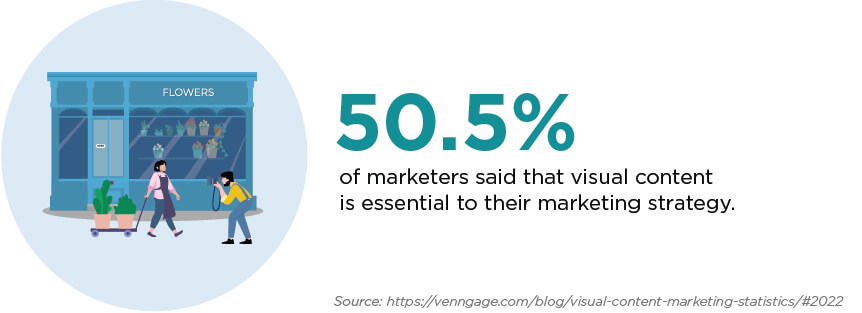Creating a blog for your company can make good business sense. For starters, it can bolster your site’s ranking in search results by adding more pages with quality content to your company website. It also helps customers get to know your business, which can build credibility and trust in your brand.
Best of all, building a blog doesn’t have to be a complicated endeavor. In this article, we’ll walk you through eight steps to get your business blog up and running smoothly.
1. Choose your blogging platform (or add a blog to your existing website).
If you’re just starting your business and you don’t have a website yet, you can create a new site and set up a blog at the same time.
If you already have a website, chances are you’re using a website builder that also provides a blogging platform, making it easy to add a blog to your existing site.
Here’s how to create a blog with some of the most popular website builders:
WordPress. The world’s most popular content management system is WordPress. It powers 43% of today’s websites. Unlike the other website builders on this list, however, it’s not self-hosted (unless you’re creating a site through a service like WordPress.com). This means if you’re using WordPress to build a new website, you will also need to find a hosting platform for your site.
If you already have a website with WordPress installed, you can add a blog page to your site from the dashboard. If you manage your own WordPress installation, you can also create a new blog in a subfolder of your site or create a subdomain on your site (ie blog.yoursitename.com) for your blog content.
Shopify. If your business needs an online storefront, Shopify offers an easy solution. With a Shopify site, you can manage your inventory and track payments. Shopify hosts sites on its own server, which means you don’t have to look for a hosting platform. Plus, it’s easy to add a blog to your store.
Wix. Many small business owners also use Wix, which is another self-hosted, beginner-friendly website builder. The platform uses AI technology to help build your site, and you can use a drag-and-drop builder to fine-tune your site’s appearance. Whether you’re building a new site or you already have a Wix site, here’s how to add a blog.
Squarespace. Another popular website builder is Squarespace. It offers no-code building tools, and like Shopify and Wix, it’s self-hosted. Squarespace offers detailed instructions on creating a blog here.
2. Select a blog theme or template.

No matter which blogging platform you use, you don’t need to design your blog from scratch. Most platforms offer a variety of themes or templates, both free and paid, that you can customize and apply to your blog.
Here are some characteristics to look for in a blog theme or template:
Simplicity. Blogs are vehicles for your content, so you want to make sure your posts are easy to read. A good rule of thumb is to go with a simple design so your content stands out.
Navigation. You want to make it easy for visitors to navigate through your blog. This means your theme or template needs a navigation system that helps readers quickly find the information they’re seeking.
Share buttons. Readers can help promote your business by sharing your blog posts on social media—and there’s always a chance your post might go viral. To encourage visitors to share, position your social media sharing buttons visibly and prominently.
Load speed. Today’s website visitors don’t like to wait around for a web page to load, so don’t use a template with large image files or bloated code. Test your template first to make sure it loads quickly.
Responsiveness. More and more people are browsing online from their mobile devices. Make sure the theme or template you choose is mobile-friendly.
3. Decide on your blog content strategy.
You want your business blog to appeal to existing and potential customers. Think about what that audience will want to see when they visit your blog. Understanding your customers’ needs can help you craft an effective content strategy.
Ask yourself questions like:
- What problems do your customers have?
- Is there a solution that you could teach them?
- Do they have any particular needs that your business can meet?
For example, if you run a landscaping company, your blog visitors might be looking for DIY landscaping ideas. You could write posts about simple landscape designs that readers can put into place themselves.
This provides value to potential clients, and if they decide to pursue a complete overhaul of their garden, they’re more likely to call you first.
4. Brainstorm blog post ideas.

Now that you have a content strategy, it’s time to get the blog post ideas flowing. Set aside time to think up content ideas.
Here are some ways to start brainstorming:
- Check out the places your potential customers hang out online and see which topics come up regularly. For example, if you run a paper goods store, you could join a Facebook group for stationery lovers.
- Ask your existing customers what they’d like to read on your blog. After all, they’re your target audience. This can also be a good way to promote your blog before you launch it.
- Take a look at your inbox. When a customer takes the time to write and send an email to a small business, it’s an indication that they care deeply about that subject.
- Read and follow industry news. Nearly every industry has online publications covering the latest news and trends. Keep up-to-date on what’s happening in your industry to help you keep your blog content fresh.
5. Create a content calendar.
Consistency plays a big role in blogging success: According to a survey from Orbit Media, bloggers that publish posts two to six times a week are 50% more likely to say they’re seeing good results.
One way to stay consistent is to create an editorial calendar for your blog. Once you’ve brainstormed content ideas, make a list of blog posts you plan to write and schedule them into your content calendar to help you stay on track.
Your content calendar doesn’t have to be fancy. Even a simple spreadsheet will work. You can also download free content calendars online, or use a project management tool such as Notion or Trello to stay organized.
6. Write and edit.
As a small business owner, blogging is just one of the many hats you wear. Follow a framework to streamline your writing process:
Outline first. Writing is usually easier when you know what you want to say. An outline will help you structure your thoughts ahead of time so that you don’t run into writer’s block when you sit down to start a draft.
Use editing assistance. A number of tools exist online to help the editing process. Grammarly can check for grammar mistakes and typos, and the Hemingway app can help make your content more readable.
Try time batching. It takes mental power to switch between cognitive tasks, which is why time batching can be an effective productivity strategy. For example, you might batch your time by researching multiple posts all in one go, or editing several blog posts in a row.
7. Source or create images.

Blog visuals matter: 50.5% of marketers said that visual content is essential to their marketing strategy in a recent survey.
But finding images for your blog isn’t as simple as downloading any photo you like. Many images are subject to copyright, so you need to properly source images that are available for commercial use, or create your own images.
Here are some options for your blog’s visuals:
Stock photos. Many stock photo sites let you purchase high-quality images. Others, including Burst, Pixabay and Unsplash, offer images that are free for commercial use. Just be sure to check the usage license before using an image.
Take your own photos. Most smartphones these days come equipped with a quality camera, making it easy to take your own pictures to accompany your blog posts. You might take product pictures or behind-the-scene shots.
Canva. If you’re looking for tons of templates for creating images for blog and social media posts, Canva is a design website with a lot of options. If you run a coffee shop, for example, a search for “coffee” returns lots of free and paid images that you can customize for your posts.
8. Publish and promote.
The final step of blogging is to hit “publish” and promote your content. Promoting your post is the best way to bring your blog to more potential readers. Here are a few places to start promoting:
Social media. Share your posts on your business’s social media accounts and experiment with social media ads if you have a marketing budget.
Email marketing. If email is part of your marketing strategy, include a link to your most recent blog posts in your emails.
In-store. Create a QR code containing a link to your blog. Display the code prominently in your store.
Email signature. Include a link to your blog in your email signature. Wisestamp is a tool that lets you customize your signature to format and display the links you want.
Starting a business blog takes time and commitment, but the rewards are worth the investment. Whether you want to generate content to attract more search engine traffic or simply increase your brand awareness, a blog can help you reach these goals.
Next steps: Interested in more tips to help your small business get ahead? Sign up for the Small Biz Ahead newsletter today.





